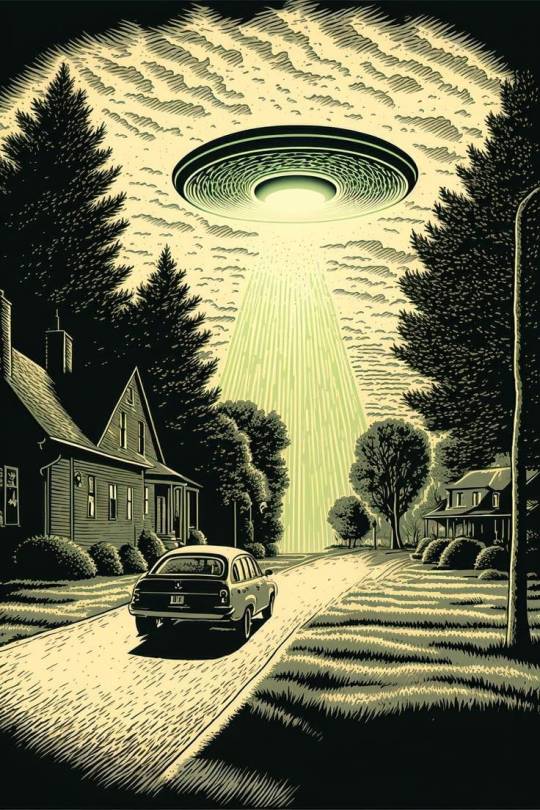#flying saucer
Text
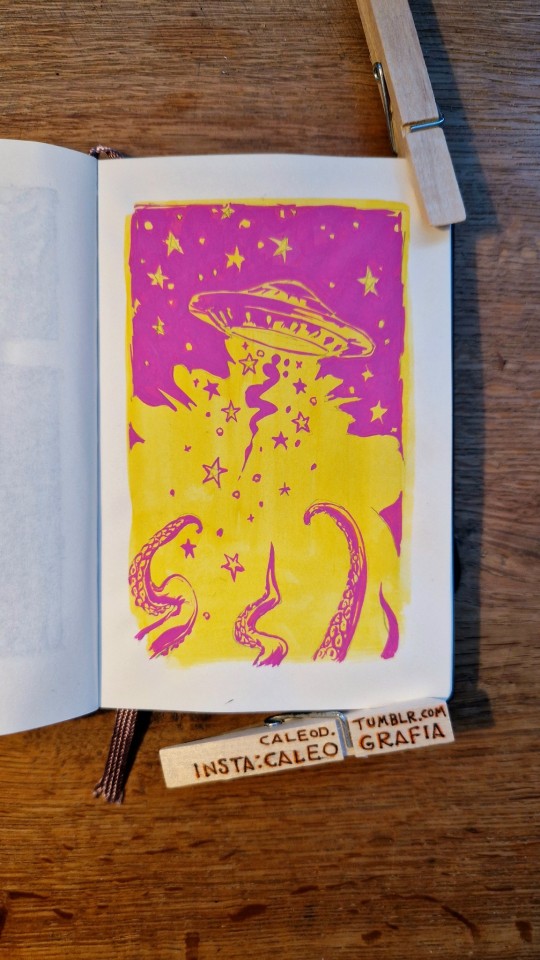
7-2-24
#moleskine#sketchbook#sketch#daily#dailyart#dailydrawing#dailypainting#dailysketch#sketchaday#artoftheday#art#artbook#artists on tumblr#watercolor#gouache#painting#ufo#flying saucer#aliens#space ship#tentacles
5K notes
·
View notes
Text
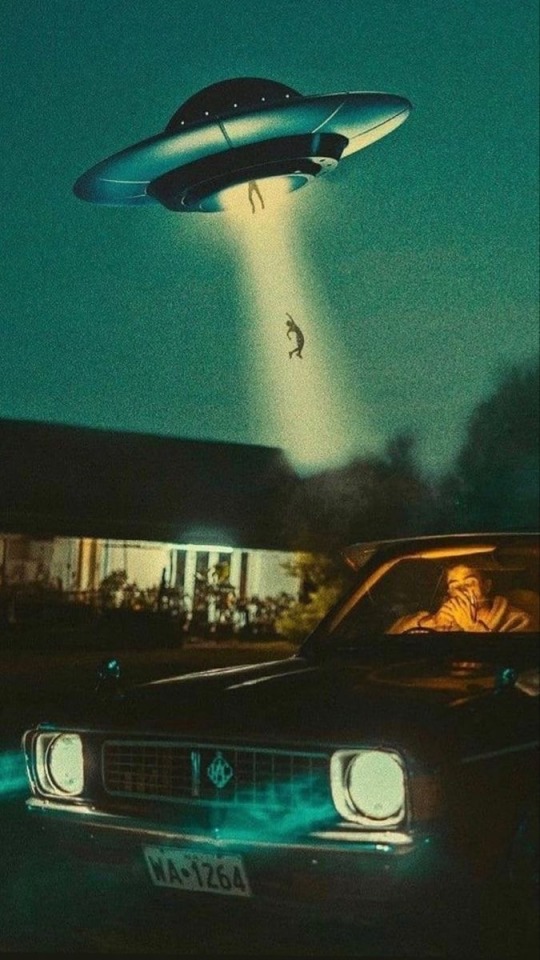
#abstract art#art#abstract#abduction#alien#scifi#ufo#flying saucer#urban exploration#glitch#vaporwave#synthwave#retrowave#retro#neon#aes#aesthetic
3K notes
·
View notes
Text
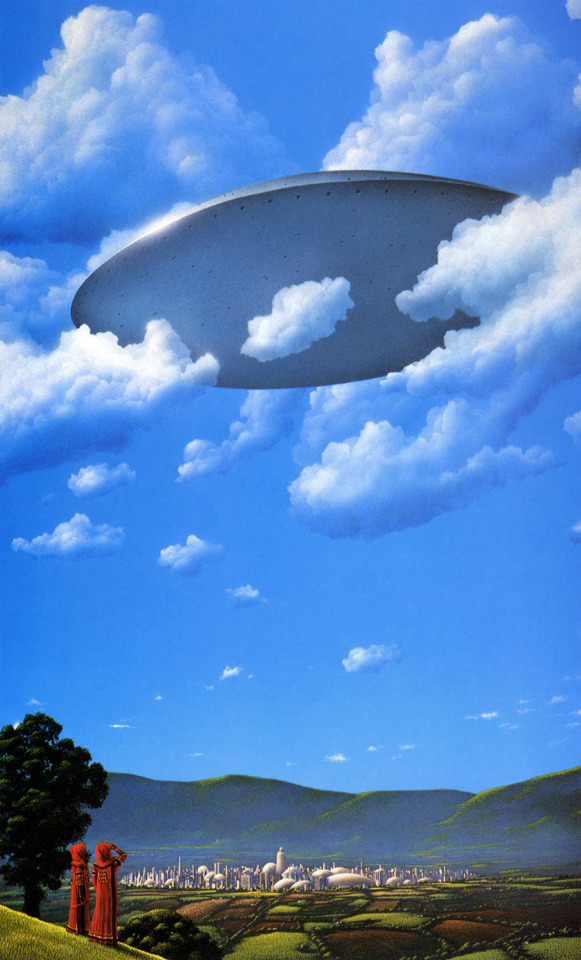
Tim White's cover art for Gather, Darkness! by Fritz Leiber, 1979.
2K notes
·
View notes
Text

Oh, look at that in the sky!
What is it?
A little shark in a flying saucer... or aqua saucer?✨🦈🛸
2K notes
·
View notes
Text
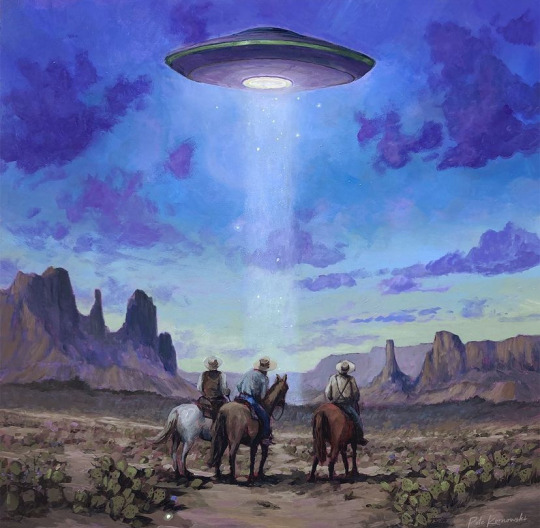
#space#ufo#earth#alien#stars#sky#sightings#ufo sighting#aliens#extraterrestrial#art#flying saucer#believe#what you want#don’t obey
483 notes
·
View notes
Text
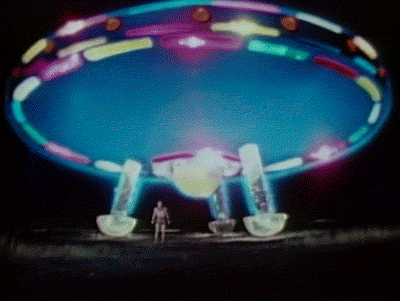
The Arrival ✦ 1980
#The Arrival#Unarius The Arrival#ufo#i'm back#welcome back#flying saucer#close encounters of the third kind#walk in the club like#80s scifi#Hammersmith Horror#opposites attract#flashing gif
625 notes
·
View notes
Text

Modern Flying Carpet (1960)
#vintage#illustration#cool#weekend#friday#vintage illustration#sixties#1960s art#1960s aesthetic#1960s#60s aesthetic#60s#black and white#flying saucer#flying#carpet#modern
231 notes
·
View notes
Text

2K notes
·
View notes
Text
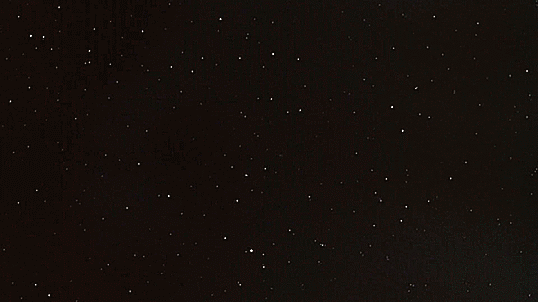







V: The Final Battle (1984)
#V The Final Battle#Visitor Spacecraft#flying saucer#cargo ship#spaceship#scifi#tvedit#scifiedit#vedit#vthefinalbattleedit#GIF#my gifs#Hide and Queue
373 notes
·
View notes
Text

"Close Encounters"
442 notes
·
View notes
Text

233 notes
·
View notes
Text
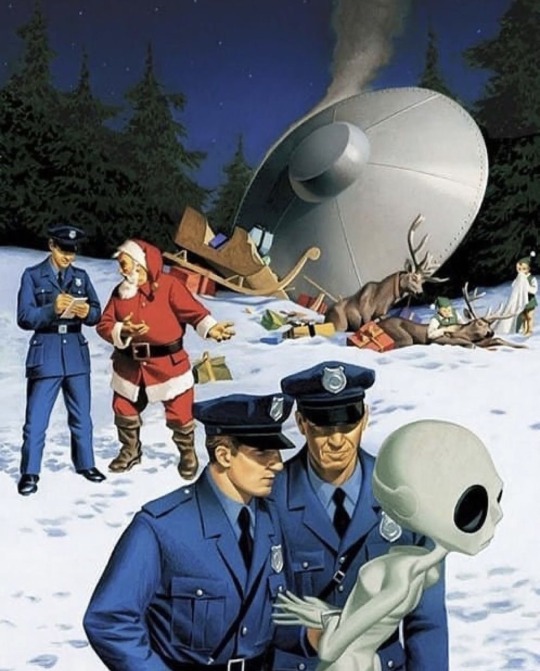
#Christmas#xmas#santa#santa claus#alien#little green men#spaceman#spaceship#ufo#flying saucer#police#popo#snow#winter#scifi#meme#memes#funny#vaporwave#synthwave#retrowave#retro#aesthetic#aes#art#aesthetics#80s aesthetic#1980s#80s#area 51
2K notes
·
View notes
Photo


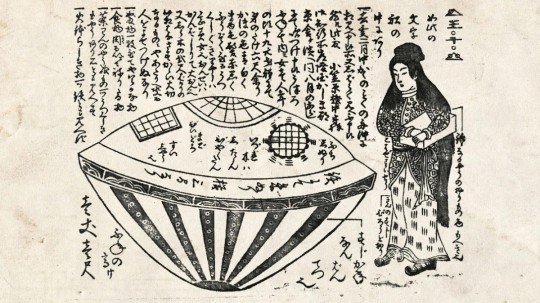
In 1803, a round vessel drifted ashore on the Japanese coast and a beautiful woman emerged, wearing strange clothing and carrying a box. She was unable to communicate with the locals, and her craft was marked with mysterious writing. This story of an utsurobune, or “hollow ship,” in the province of Hitachi (now Ibaraki Prefecture) is found in many records of the Edo period (1603–1868), and Tanaka Kazuo, professor emeritus at Gifu University, has studied the topic for many years. What drew him away from his main research area, applied optics, to investigate this curious episode? And what really took place?
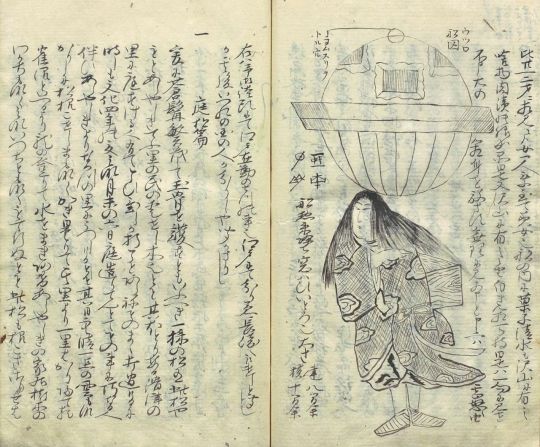
“Like a Flying Saucer”
Tanaka says he began to research the ship after the deadly subway sarin attacks in 1995 by the Aum Shinrikyō cult. “There was a lot of coverage of Aum founder Asahara Shōkō's prophecies and claims to be able to float in the air. Yet the cult’s senior members were part of the scientific elite. I started giving lectures considering paranormal phenomena from a scientific perspective, which meant that I was collecting all kinds of materials for teaching, such as about UFOs in the United States and Japanese folklore. While doing so, I came across the utsurobune legend.” He adds, “Long before the American UFO stories, the craft depicted in Edo-period Japanese documents for some reason looked like a flying saucer. This was fascinating to me.”
UFOs became a modern sensation after the media reported US businessman Kenneth Arnold as having witnessed “flying saucers” on June 24, 1947. A flood of similar stories followed from around the world. Most famously, a UFO was alleged to have crashed to the ground near Roswell, New Mexico, in July 1947. “In the end, though, no wrecks or alien bodies were recovered,” Tanaka says. “There was only the ambiguous testament of witnesses. It was the same with all the other UFO stories from around the world—they were mysteries without any substantial evidence. The utsurobune legend, however, has a number of documents to examine as leads, so in this sense, for researchers it’s a mystery with substance.”
A book published in English by Tanaka Kazuo on his research.
There are similar oral traditions about “hollow ships” across Japan in the Edo period. Tanaka’s research is focused on the various documents that describe the 1803 incident in Hitachi and include illustrations of a beautiful woman and a strange vessel, although they cite different dates. One of the best-known sources is the Toen shōsetsu (Toen Stories), an 1825 collection recording fantastic rumors, which was written by the Toenkai literary circle and edited by Kyokutei Bakin, famous for his lengthy historical romance Nansō Satomi hakkenden (The Eight Dog Chronicles). Others are Nagahashi Matajirō's 1844 work Ume no chiri (Plum Dust), as well as collections like Ōshuku zakki (Ōshuku Notes), Hirokata zuihitsu (Essays by Hirokata), and Hyōryūki-shū (Records of Castaways), which gathers stories of foreign ships washed up in Japan and of Japanese sailors who came ashore overseas.

Picture 1- Hyōryūki-shū (Records of Castaways) by an unknown author. The text describes the woman as being around 18 to 20 years of age, well-dressed, and beautiful. Her face is pale, and her eyebrows and hair are red. It is impossible to communicate with her, so it is unclear where she is from. She holds a plain wooden box as though it is very important to her and keeps her distance. There is mysterious script written in the boat. (Courtesy Iwase Bunko Library in Nishio, Aichi Prefecture)
Pictures 2 and 3- Unknown (maybe Mito bunsho)
Picture 4- From Ōshuku zakki (Ōshuku Notes; around 1815) by Komai Norimura, a vassal of the powerful daimyō Matsudaira Sadanobu. (Courtesy National Diet Library)
Picture 5- From Hirokata zuihitsu (Essays by Hirokata; 1825) by shogunate retainer and calligrapher Yashiro Hirokata, who was also a member of the Toenkai circle. (Courtesy National Archives of Japan)
This post is mostly sourced from nippon.com and japantoday
2K notes
·
View notes
Text

David Schleinkofer illustration for Science Digest, July 1981.
210 notes
·
View notes
Text
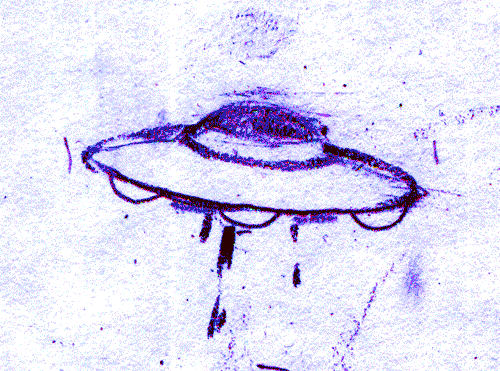
(artist unknown)
#flying saucer#ufo#uap#animation#sketch#sketches#art#artwork#drawing#gif#gifs#aesthetic#blue#spaceship#space#alien#aliens#beauty-funny-trippy
3K notes
·
View notes
